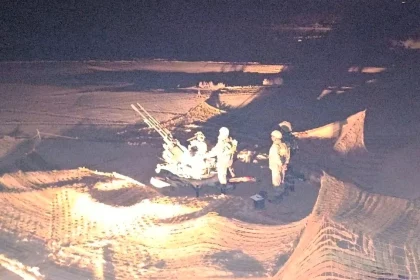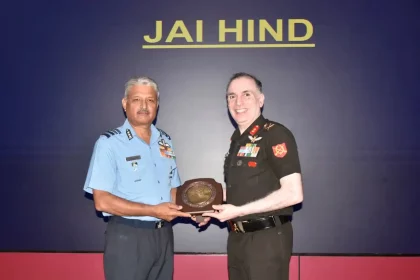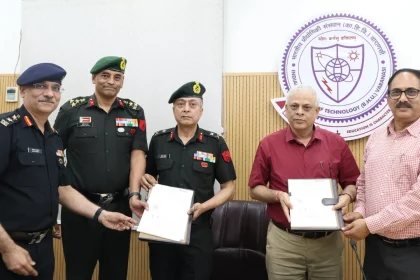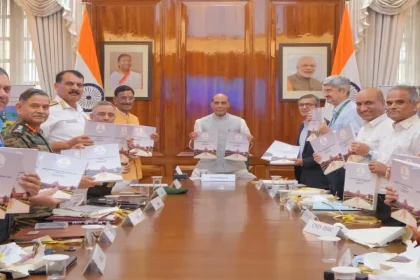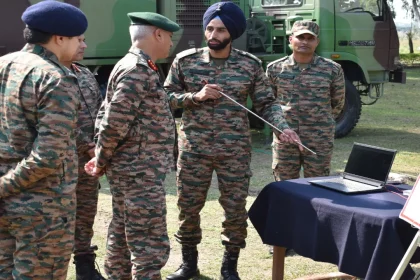Southern Command Demonstrates Unified Air Defence Power During Exercise Trishul
Joint Exercise ‘Sudarshan Vayu Sanchar’ showcases seamless synergy of Army, Navy, and Air Force in integrated air defence operations, embodying…
Air Marshal Surat Singh Addresses Higher Command Course at AWC on Air Operations in the Eastern Theatre
The Air Officer Commanding-in-Chief, Eastern Air Command, emphasised capability development, operational challenges, and joint strategies for mission accomplishment.
Cochin Shipyard Delivers First Indigenous ASW Vessel INS Mahe to Indian Navy
INS Mahe: A Major Leap in India’s Indigenous Naval Shipbuilding and Shallow Water Anti-Submarine Warfare Capability.
39 Gorkha Training Centre Signs MoU with IIT (BHU) to Boost Innovation in Military Training
Strategic Collaboration Between 39 GTC and IIT (BHU) to Integrate Technology and Innovation in Agniveer Training.
Rajnath Singh Releases Defence Procurement Manual 2025 to Simplify Procedures, Boost Indigenisation
DPM 2025 Set to Streamline Defence Procurement, Boost Indigenous Defence Manufacturing and Technology.
Lt Gen Rajan Sharawat Reviews Operational Readiness, Praises Tech-Driven Excellence in Pathankot Sector
GOC Lauds Troops’ Innovation and Self-Reliant Tech Integration in Pathankot Sector.

